If you’re interested in keeping koi fish in your pond, you might be wondering, ‘How Long Do Koi Live in a Pond?’ The lifespan of koi fish can vary depending on several factors, including water quality, feeding habits, and genetics. How Long Do Koi Live in a Pond? In this article, we’ll explore the lifespan of koi fish, what factors can influence their lifespan, and how to maintain optimal pond conditions to help your koi live a long and healthy life.
Understanding koi fish is the first step in understanding their lifespan. Koi fish are a type of carp that have been selectively bred for their ornamental colors and patterns. They are hardy fish that can adapt to a range of environments, but they do have specific requirements for optimal health and longevity. In general, koi fish can live up to 30 years in a domestic pond, while Japanese koi can live up to 40 years or longer. However, with proper care and maintenance, some koi fish have been known to live up to 60 years or more.
How Long Do Koi Live in a Pond? Your Answers:
Understanding Koi
Koi fish are a popular choice for pond enthusiasts due to their vibrant colors and patterns. These fish are a type of carp that originated in Japan, but are now bred all over the world. Koi are known for their longevity, with some living up to 50 or even 60 years in optimal conditions. ‘How Long Do Koi Live in a Pond’ is a common question among koi owners, and the answer largely depends on the care and environment provided. ‘How Long Do Koi Live in a Pond’ can be significantly extended with proper care and a suitable habitat.
There are many breeds of koi, each with their own unique colors and patterns. Some of the most popular breeds include Kohaku, which has a white body and red markings, and Butterfly Koi, which has longer fins and a more flowing appearance. Tancho Koi is another popular breed, characterized by a single red spot on its head.
When it comes to gender, male koi fish are typically smaller and slimmer than their female counterparts. Female koi fish are usually larger and rounder, especially during breeding season. However, both male and female koi can live equally long if given proper care.
One of the most important factors in keeping koi fish healthy and happy is maintaining good water quality. This means regularly testing the water for pH levels, ammonia, and nitrite levels, and ensuring that the water is well-oxygenated. Koi are also omnivores, so it’s important to provide them with a balanced diet that includes both plant and animal matter.
In short, understanding koi fish and their needs is crucial for their longevity and well-being. By providing them with a clean and well-maintained pond, a balanced diet, and proper care, you can enjoy these beautiful fish for many years to come.


The Lifespan of Koi
Koi fish are known for their long lifespan, making them a popular choice for pond owners and collectors alike. The question ‘How Long Do Koi Live in a Pond’ is quite relevant, as the average lifespan of koi can range from 20 to 35 years. However, with proper care and resources, seasoned pond owners and knowledgeable koi collectors often expect their koi to live up to 40 years or more.
Factors such as water quality, feeding habits, and wintering environment can affect the lifespan of koi. Lack of oxygen is the most prominent stressor that leads to the sudden death of koi fish, so it’s important to monitor oxygen levels in the pond. Algae blooms can also contribute to the loss of oxygen, so be sure to maintain proper algae control.
You can usually tell the age of a koi by its size, but there are exceptions. The oldest koi fish on record is Hanako, who lived to be 226 years old. However, this is an outlier, and most koi fish will not live nearly as long.
To enhance the lifespan of your koi, provide a balanced diet and avoid overfeeding. Koi fish are omnivores and require a mix of protein and vegetables. Keep the pond clean and maintain proper water quality, including appropriate pH levels and temperature. Additionally, be sure to winterize your pond properly to avoid stress on your koi during the colder months.
In brief, the lifespan of koi fish can vary depending on several factors, but with proper care and resources, you can expect your koi to live a long and healthy life.
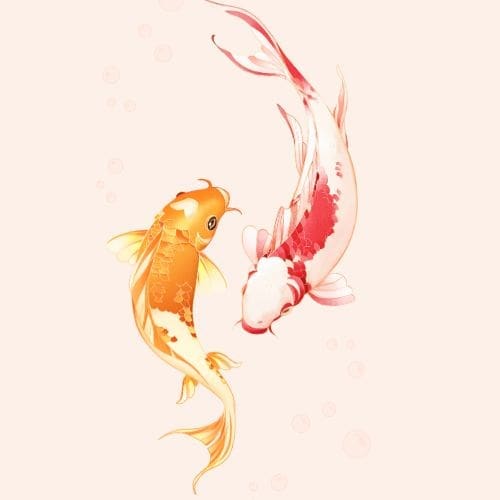

Get the Information You Need!
Join Us and Ask an Expert
Factors Influencing Koi Lifespan
Koi fish are known for their longevity, with some living up to 60 years or even longer. However, their lifespan can be influenced by several factors, including genetics, stress, nutrition, and hibernation. In this section, we will explore these factors in detail to help you understand how to ensure your koi live a long and healthy life.
Genetics
Genetics play a significant role in determining the lifespan of koi fish. Japanese koi, for example, are known for their superior genetics and can live up to 40 years on average. However, other factors, such as water quality and diet, can also affect their lifespan.
Water Quality
Water quality is crucial to the health and wellbeing of koi fish. Poor water quality can cause stress, which can lead to illness and even death. To ensure your koi live a long and healthy life, it’s essential to maintain clean, well-oxygenated water in your pond. You can achieve this by installing a filtration system, regularly testing the water, and performing routine water changes.
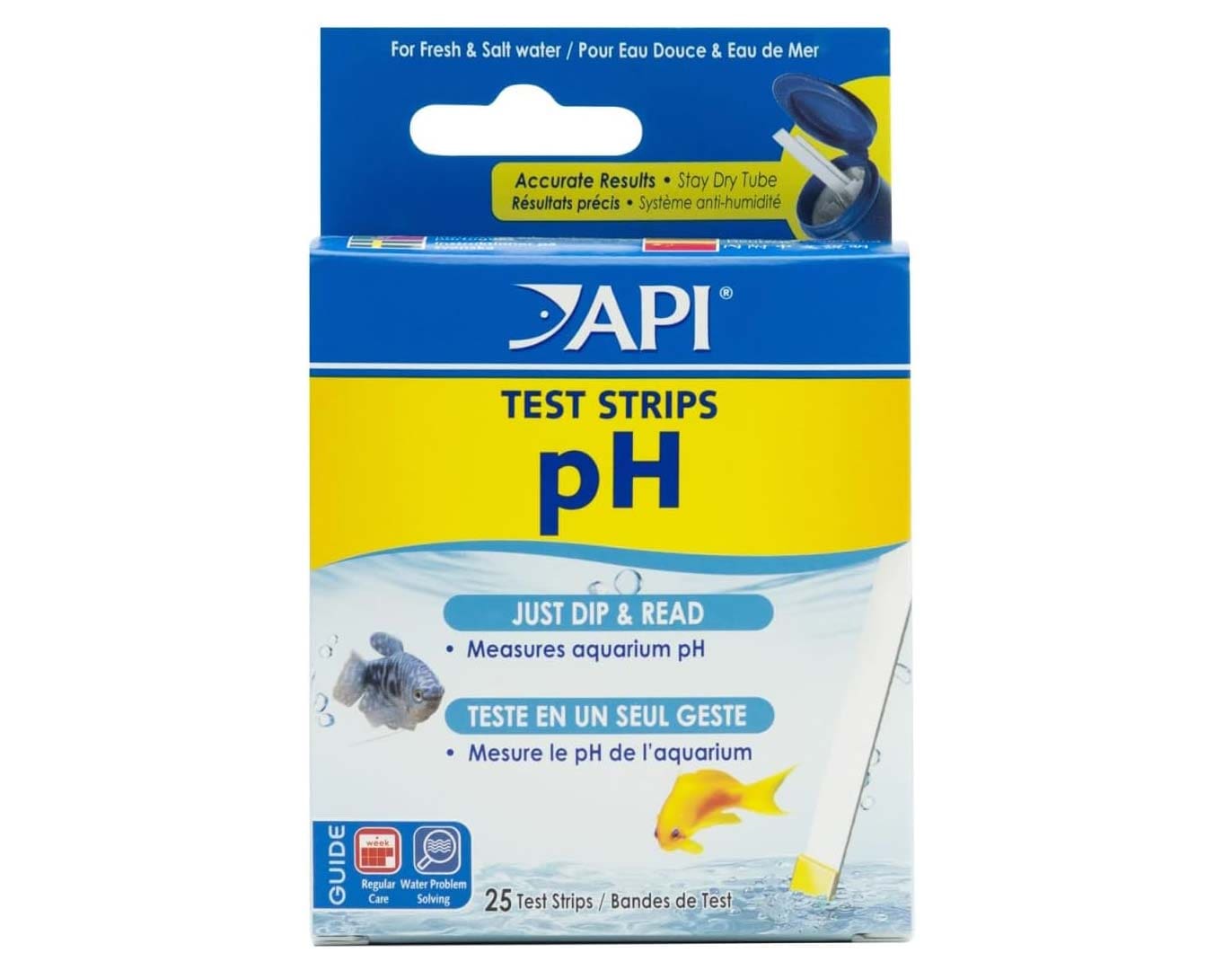

Monitor Your Water Quality
Nutrition
A balanced diet is essential for the growth and health of koi fish. Koi require a diet high in protein and nutrients to thrive. Feeding your koi the right amount of food and ensuring they receive a balanced diet can help them live longer. Overfeeding can lead to obesity, which can shorten their lifespan.
Hibernation
Koi fish hibernate during the winter months, and it’s essential to prepare them for this period. As the water temperature drops, their metabolism slows down, and they require less food. Feeding them a high-protein diet in the fall can help them build up their nutritional status before hibernation. During hibernation, it’s crucial to keep the water temperature stable and ensure they have enough oxygen to survive.
In short, several factors can influence the lifespan of koi fish. By providing them with a clean, well-maintained pond, a balanced diet, and preparing them for hibernation, you can ensure they live a long and healthy life.
Koi in Different Environments


Wild vs Domestic Koi
Koi fish are native to East Asia and can be found in the wild in rivers, streams, and ponds. Wild koi can adapt to different environments and can live up to 25 years or more. Domestic koi, on the other hand, have been selectively bred for their color and pattern and are commonly found in backyard ponds. Domestic koi can live up to 15 years, but with proper care and attention, they can live much longer.
Pond Size and Stocking
The size of your pond can have a significant impact on the lifespan of your koi. A small pond with too many fish can lead to overcrowding and poor water quality, which can result in disease and a shorter lifespan for your koi. It is recommended to have at least 1000 gallons of water for every three koi fish.
Stocking your pond with the right number of koi is also crucial. Overstocking can lead to poor water quality and stress on your fish. As a general rule, you should have no more than one inch of fish per ten gallons of water.
Koi in Cold-Water Environments
Koi are cold-water fish and can survive in temperatures ranging from 35 to 85 degrees Fahrenheit. However, they prefer water temperatures between 65 to 75 degrees Fahrenheit. If you live in a cold climate, it is essential to provide your koi with a suitable environment during the winter months.
During the winter, koi become dormant and stop eating. They will hibernate at the bottom of the pond, and the water temperature should not drop below freezing. If you live in an area with harsh winters, you may need to invest in a pond heater or aerator to keep your pond from freezing over completely.
Overall, the lifespan of your koi depends on several factors, including water quality, feeding habits, and environmental conditions. By providing your koi with the right environment and proper care, you can help ensure that they live a long and healthy life.


Maintaining Optimal Pond Conditions
To ensure that your koi live a long and healthy life in your pond, it is essential to maintain optimal pond conditions. This means that you need to pay attention to the water quality, oxygenation, and temperature, as well as the pH levels of your pond.
Water Quality
Maintaining good water quality is crucial for the health of your koi. Poor water quality can lead to stress, disease, and even death. You should test your pond water regularly for ammonia, nitrite, and nitrate levels. These levels should be kept at a minimum to avoid any harm to your fish.
One way to maintain good water quality is to use a filtration system. A good filtration system will remove any waste and debris from the water, which will help to maintain a healthy environment for your koi.
Oxygenation and Temperature
Koi require a good supply of oxygen to survive. Therefore, it is important to ensure that your pond has adequate oxygen levels. Poor oxygenation can lead to stress, disease, and even death.
To maintain good oxygen levels, you should consider using an aerator or a fountain. These devices will help to increase the oxygen levels in your pond. Additionally, you should pay attention to the temperature of your pond. Koi prefer water temperatures between 59-77°F. If the water temperature gets too high or too low, it can lead to stress and disease.
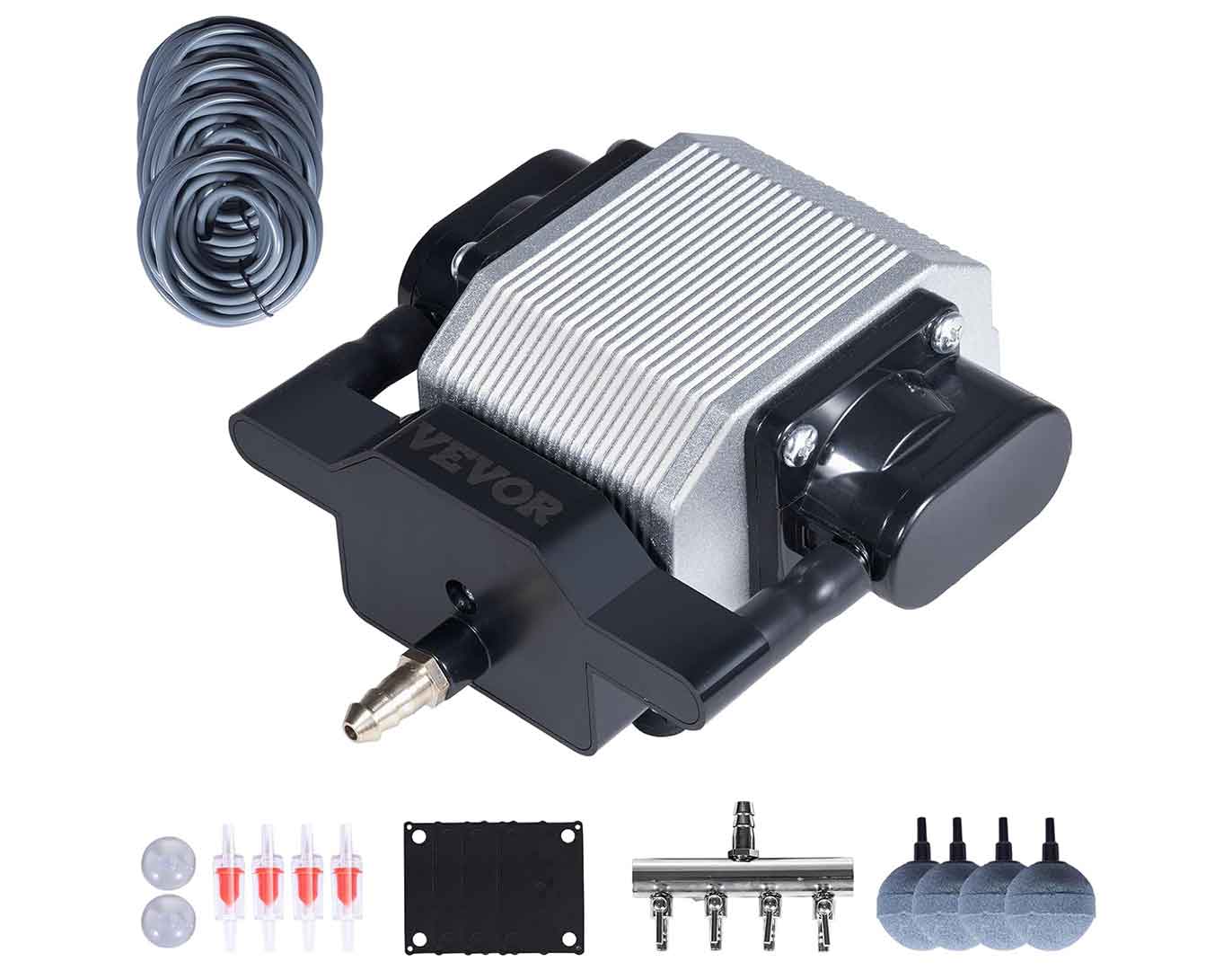

All-in-One Pond Air Pump Kit with Air Stones
PH Levels
The pH level of your pond is also important for the health of your koi. The ideal pH level for koi is between 7.0 and 8.0. If the pH level gets too low or too high, it can lead to stress and disease.
To maintain the ideal pH level, you should test your pond water regularly. If the pH level is too low, you can add baking soda to increase it. If the pH level is too high, you can add vinegar or citric acid to decrease it.
In brief, maintaining optimal pond conditions is crucial for the health and well-being of your koi. By paying attention to the water quality, oxygenation, temperature, and pH levels of your pond, you can ensure that your koi live a long and healthy life.
Pond Maintenance and Filtration
When it comes to maintaining a healthy environment for your koi, pond maintenance and filtration are crucial. Proper pond maintenance can help prevent the buildup of harmful bacteria and algae, which can negatively impact the health of your koi.
Filtration Systems
Investing in a high-quality filtration system is essential to maintaining a healthy pond. Filtration systems help remove debris, excess food, and waste from the water, which helps keep the water clean and clear. There are several types of filtration systems available, including biological filters, mechanical filters, and UV sterilizers.
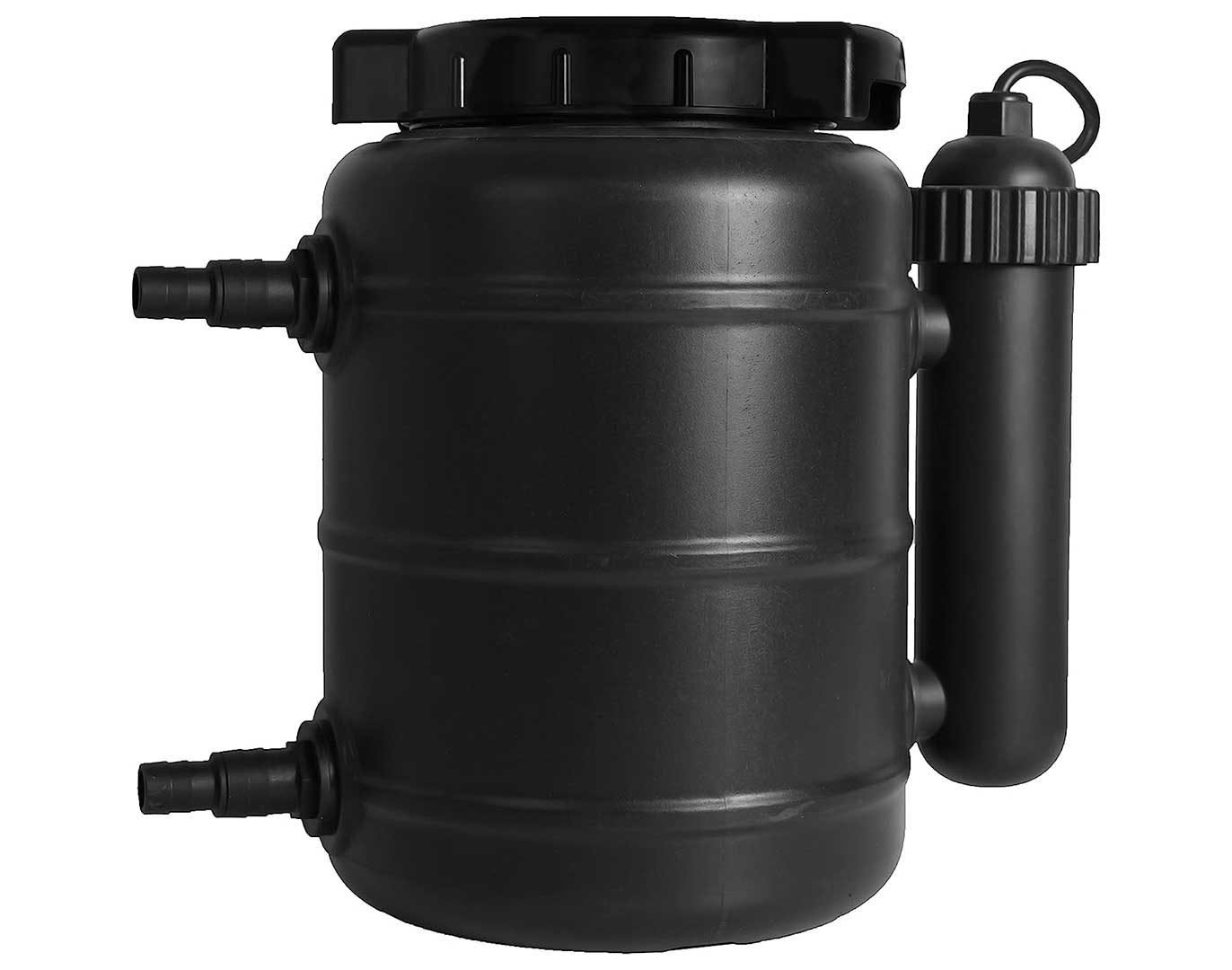

Complete Pond Filter with UV Clarifier
Biological filters use beneficial bacteria to break down harmful waste and debris, while mechanical filters physically remove debris from the water. UV sterilizers use ultraviolet light to kill harmful bacteria and algae.
When choosing a filtration system, consider the size of your pond, the number of koi you have, and the amount of sunlight your pond receives. It’s recommended to purchase a filtration system that can filter the volume of your pond two to four times every hour.
Algae Control
Algae can quickly become a problem in a koi pond, especially in warmer months when sunlight is abundant. To control algae growth, it’s essential to maintain proper water chemistry and keep the water clean.
One way to control algae growth is by adding aquatic plants to your pond. Plants can help shade the water, which can reduce the amount of sunlight that reaches the water’s surface, preventing algae growth. Additionally, adding beneficial bacteria to your pond can help break down organic waste and reduce algae growth.
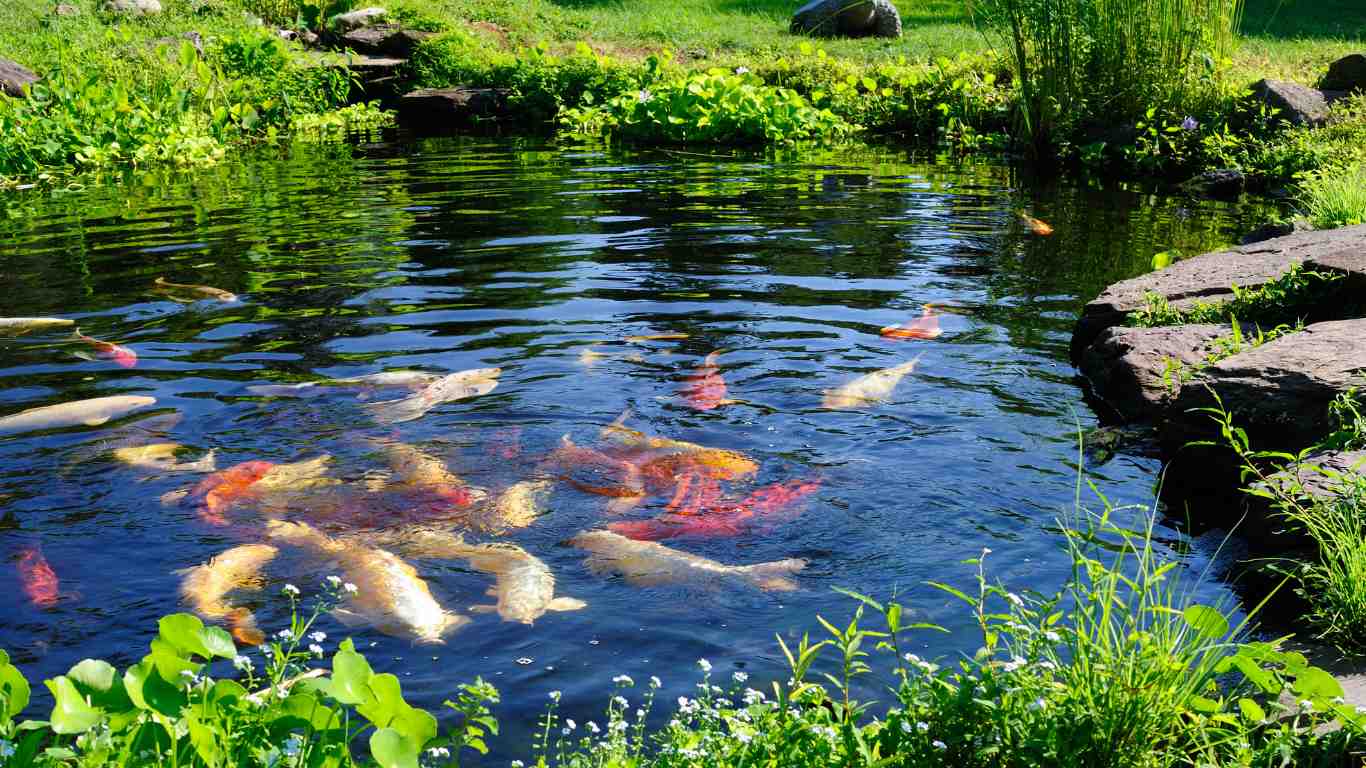

Regular Pond Cleaning
Regular pond cleaning is essential to maintaining a healthy environment for your koi. It’s recommended to clean your pond at least once a month, depending on the size of your pond and the number of koi you have.
During pond cleaning, remove any debris, excess food, and waste from the water. Additionally, clean any filters or pumps to ensure they are functioning correctly.
In conclusion, maintaining a healthy environment for your koi requires proper pond maintenance and filtration. Investing in a high-quality filtration system, controlling algae growth, and regularly cleaning your pond can help prevent the buildup of harmful bacteria and algae, promoting the health and longevity of your koi.
Koi Nutrition and Feeding
Understanding Koi Diet
Proper nutrition is essential to the health and longevity of your koi fish. Koi are omnivorous, which means they eat both plant and animal matter. In the wild, koi feed on a variety of aquatic plants, insects, and small crustaceans. However, in a pond setting, it is important to provide your koi with a balanced diet that meets all their nutritional needs.
Koi food should contain a balance of proteins, carbohydrates, vitamins, and minerals. Proteins are essential for growth and tissue repair, while carbohydrates provide energy. Vitamins and minerals are necessary for overall health and proper bodily function.
Feeding Habits of Koi
Koi are opportunistic feeders and will eat almost anything that fits in their mouth. However, it is important to avoid overfeeding your koi, as this can lead to health problems such as obesity and poor water quality.
When feeding your koi, it is recommended to feed them 2-4 times a day, only giving them what they can consume within 5 minutes. This will prevent overfeeding and ensure that your koi are getting the right amount of nutrition.
Koi food comes in various forms, including pellets, flakes, and freeze-dried options. Pellets are the most common form of koi food and are available in different sizes and formulas. When selecting koi food, it is important to choose a high-quality brand that contains all the necessary nutrients.
Additionally, it is important to vary your koi’s diet to ensure they are getting a balanced mix of nutrients. You can do this by alternating between different types of koi food or by supplementing their diet with fresh vegetables such as lettuce or peas.
In summary, understanding koi diet and feeding habits is crucial to maintaining the health and longevity of your koi fish. Providing a balanced diet that meets all their nutritional needs and avoiding overfeeding will help keep your koi healthy and happy.
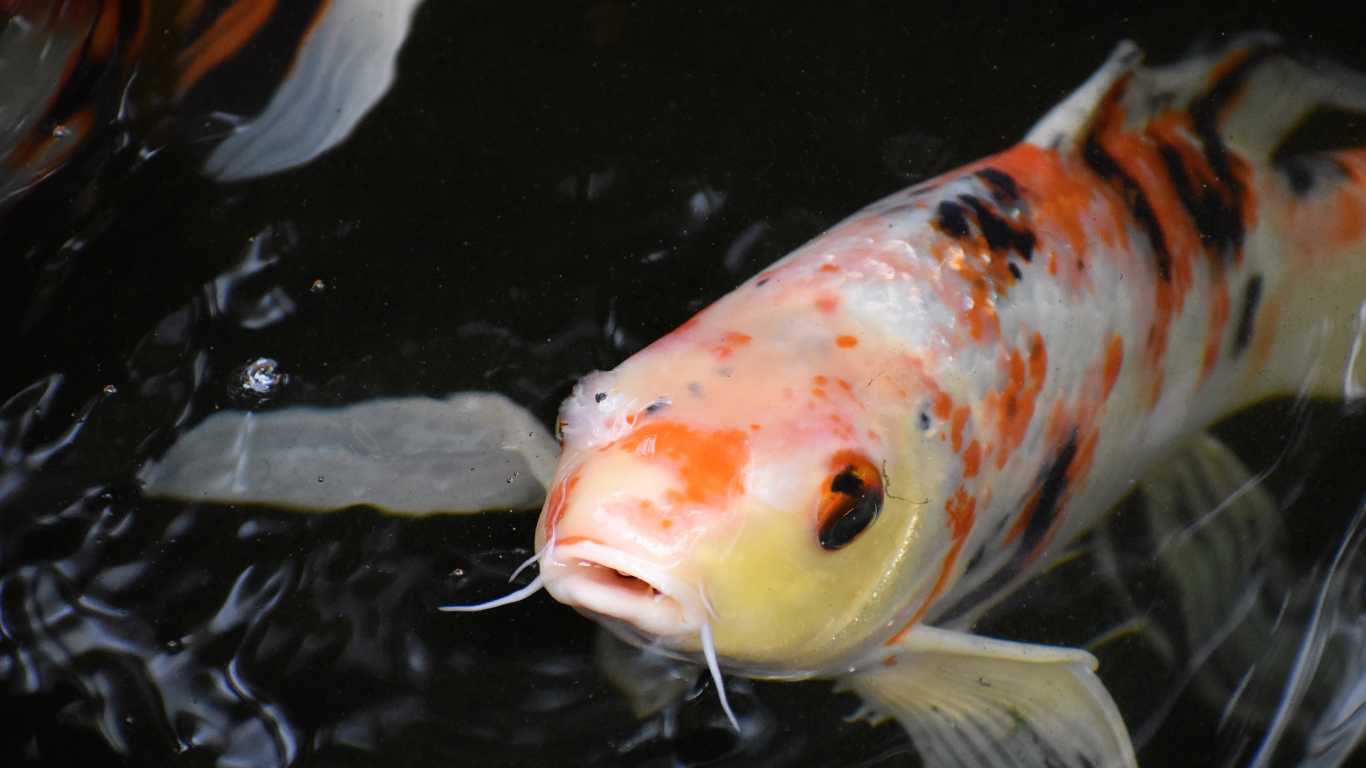

Koi Health and Disease Prevention
Taking care of your koi’s health is essential if you want them to live a long and happy life in your pond. In this section, we’ll discuss common koi diseases and how to prevent overcrowding.
Common Koi Diseases
Koi fish are susceptible to various illnesses and diseases that can affect their overall health and lifespan. Here are some of the most common koi diseases and how to identify them:
- Ich: Also known as white spot disease, ich is caused by a parasite that appears as small white spots on the koi’s body. It can be treated with medication and proper water quality.
- Ulcers: Ulcers are open wounds that can appear on the koi’s body due to poor water quality or physical injuries. They can be treated with medication and proper wound care.
- Parasites: Koi can be affected by various parasites, including flukes and worms. These can be identified through microscopic examination and treated with medication.
Regular health checks are crucial to identify any signs of illness early on. Prompt treatment can prevent the disease from spreading and improve your koi’s chances of recovery.
Preventing Overcrowding
Overcrowding can lead to stress, poor water quality, and the spread of diseases among your koi. Here are some tips to prevent overcrowding in your pond:
- Calculate the right number of koi: A good rule of thumb is to have no more than one koi per 250 gallons of water. This ensures that each koi has enough space to swim and thrive.
- Quarantine new fish: When introducing new koi to your pond, quarantine them for at least two weeks to prevent the spread of diseases.
- Maintain proper water quality: Regularly test your pond’s water quality and make necessary adjustments to maintain optimal conditions for your koi.
By following these tips, you can prevent overcrowding and ensure that your koi remain healthy and disease-free.
Remember, taking care of your koi’s health requires regular attention and maintenance. By providing proper care and preventing overcrowding, you can help your koi live a long and healthy life in your pond.


Breeding and Lifecycle of Koi
Breeding koi is a fascinating and rewarding experience for many breeders. Koi are known for their beautiful colors and patterns, and breeding them can result in some truly unique and stunning offspring. ‘How Long Do Koi Live in a Pond’ is an important consideration in this process. In this section, we will cover the basics of koi breeding, their lifecycle, and address the question, ‘How Long Do Koi Live in a Pond’.
When it comes to breeding koi, it’s important to start with healthy, mature fish. Female koi typically reach sexual maturity at around three years old, while male koi can reach maturity as early as two years old. The koshihara family, a renowned koi breeding family in Japan, recommends waiting until the male koi is at least three years old before breeding to ensure the best quality offspring.
Once the fish are mature and ready to breed, breeders will typically place the female koi in a breeding tank first. The tank should be equipped with plenty of hiding spaces for the eggs and fry to avoid predation. The male koi is then introduced to the tank, and the breeding process usually takes place within a few days.


Get Advice from an Expert – Join Our Koi Fish Newsletter
During the breeding process, the male koi will chase the female koi around the tank, nudging her sides to encourage her to release her eggs. Once the eggs are released, the male koi will fertilize them. The eggs will then hatch into fry within a few days.
Breeding koi can be a delicate process, and it’s important to monitor the water quality and other environmental factors to ensure the best possible outcome. Breeders may need to adjust the temperature, pH levels, and other factors to encourage successful breeding.
When it comes to the lifecycle of koi, these fish can live for many years when kept in optimal conditions. Japanese koi, in particular, can live up to 40 years in ideal conditions, while domestic koi can live for up to 15 years. However, the lifespan of koi may vary depending on several factors, such as water quality, feeding habits, and genetics.
Overall, breeding and raising koi can be a rewarding experience for those with the time and resources to do so. With proper care and attention, you can enjoy these beautiful fish for many years to come.


The Role of the Koi Keeper
As a koi keeper, your role is crucial in ensuring the longevity and well-being of your fish. Whether you are a hobbyist or a koi collector, your experience and planning will play a significant role in the lifespan of your koi.
One of the most important things you can do as a koi keeper is to maintain excellent water quality. Poor water quality is one of the leading causes of stress and disease in koi fish, which can significantly reduce their lifespan. You should regularly test the water in your pond and ensure that the pH levels, ammonia, and nitrite levels are within safe limits.
Feeding your koi the right nutrition is also essential for their health and longevity. Overfeeding can lead to obesity and other health problems, while underfeeding can cause malnutrition. You should research the appropriate diet for your koi and feed them the right amount of food at the right time.
As a koi keeper, you should also pay attention to the behavior of your fish. Koi that are stressed or sick may exhibit unusual behavior, such as swimming erratically or hiding. If you notice any unusual behavior, you should investigate and take appropriate action to address the issue.
Finally, experience plays an important role in the lifespan of your koi. As you gain more experience as a koi keeper, you will learn how to recognize and address potential issues before they become serious problems. You will also develop a better understanding of the needs of your koi and how to provide them with the best possible care.
In summary, as a koi keeper, your role is critical in ensuring the health and longevity of your fish. By maintaining excellent water quality, feeding your koi the right nutrition, paying attention to their behavior, and gaining experience, you can help your koi live a long and healthy life.


JOIN OUR COMMUNITY AND GET A FREE E-BOOK
Final Remarks
In the end, the lifespan of koi fish can vary depending on various factors, such as their environment, genetics, and the care they receive. While some koi fish can live up to 60 years or more, the average lifespan for domestic koi in the United States is around 15 years.
To help ensure your koi fish live a long and healthy life in your pond, it is important to provide them with optimal conditions. This includes maintaining excellent water quality and pH levels, providing them with a balanced and nutritious diet, and keeping your pond ecosystem clean and safe.
Additionally, it is recommended to avoid overcrowding your pond with too many koi fish, as this can lead to stress and disease. Providing adequate space and shelter for your koi fish can also help them thrive and live longer.
It is also worth noting that Japanese koi tend to live longer than domestic koi, due to superior genetics and lifestyle. However, with proper care and attention, your domestic koi can still live a long and healthy life in your pond.
Overall, the lifespan of your koi fish is largely in your hands. By providing them with the best possible care and environment, you can help ensure they live a long and happy life in your pond.
Frequently Asked Questions
What is the average lifespan of koi fish in a pond?
The average lifespan of koi fish in a pond is around 20-30 years. However, with proper care and maintenance, koi can live up to 50-60 years or even longer.
How long can butterfly koi live in a pond?
Butterfly koi have a similar lifespan to regular koi fish and can live up to 20-30 years or longer with proper care.
What are the factors that affect the lifespan of koi fish in a pond?
Several factors can affect the lifespan of koi fish in a pond, including water quality, pH levels, nutrition, stress, and genetics. Poor water quality, overfeeding, and overcrowding can all lead to health problems and a shorter lifespan for koi fish.
How can I ensure the longevity of my koi fish in a pond?
To ensure the longevity of your koi fish, it’s essential to maintain good water quality and pH levels, provide a balanced and nutritious diet, and avoid overcrowding. Regular water changes, proper filtration, and regular monitoring of water parameters can also help keep your koi healthy and happy.
What is the oldest recorded age of a koi fish in a pond?
The oldest recorded age of a koi fish in a pond is over 200 years old. However, this is exceptionally rare, and most koi will live between 20-30 years with proper care.
Are there any special requirements for koi fish to survive winter in an outdoor pond?
During the winter, koi fish become less active and require less food. It’s essential to keep the water temperature above freezing, which can be achieved with a pond heater or by using a de-icer. It’s also important to ensure that the pond doesn’t freeze over completely, as this can trap harmful gases and lead to oxygen depletion.
 1 (509) 228-8646
1 (509) 228-8646



